
The Naos QG also has a pair of RGB LEDs that light up the scroll wheel and logo. Again, though, customisation is very limited. You can set the colour of each LED separately and turn the lights on or off (not independently), and that's it. Of course, masses of RGB customisation has no practical value, but it is lacking relative to other modern gaming mice. You can't use the lights to indicate the current profile or DPI setting either – the gaming overlay, which we'll get to shortly, is used for this instead.
The Quantified Gaming screen in Mionix Hub is one of two areas that actually utilises the unique sensor data. Below the usage data bars is a heart rate readout alongside two smaller ones measuring current clicks per second and tracking speed. Below these is a pair of graphs showing the last 30 seconds of heart rate and GSR, although this comes without a scale and the heart rate part is pale and difficult to make out.
The last main screen, Statistic, has a log of your sessions, although we have a few issues here. It uses a drop-down menu for prior session access, but we found our session data was not being saved across reboots. This is especially problematic as rebooting seems to be the only way to stop recording data for a given session – there's no clear way of stopping or starting a new session, for example if you wanted to save and record data for one game and then do the same separately for a different one. The graph tool is also basic, with only the heart rate one having a labelled y-axis scale. Data analysis is nothing new in the world of peripherals, but given the heavy focus on biometric data, we were expecting something a bit more exciting here.
Mionix also offers an in-game overlay, so you and anyone you're streaming to or recording for can also see the gathered data in real-time and get an indication of stress levels and the like. The overlay is offered separately from Mionix Hub as an app that's installable through Overwolf. The overlay displays a circle with a numerical heart rate readout in the middle and a pulse graph below this, while the outer edge of the circle morphs to visually represent your GSR. It's clean and easily understood. The overlay can be repositioned anywhere on screen and changed between grey, red and yellow – this being enough, it seems, for Mionix to describe it as having a 'customisable UI'. The circle also temporarily displays new profiles and DPI information whenever they're changed, which is handy.
With its free, open API, Mionix is hoping developers will step up and incorporate the gathered data into games, giving the example of having sweat run into your eyes when your GSR is up. At this stage, however, this remains a paper-based idea.
While it's claimed the sensors are high quality, they're not medical grade. We did observe some bizarre behaviour, such as random spikes in heart rate for no apparent reason – we're fairly certain this didn't correlate to our actual heart rate, but maybe we're just dying. Mionix does insist you need to have a good, unmoving grip on the mouse at all times (which the shape caters very well for, in fairness), and that the software 'will never be' final, since it is open and feedback-driven.
As outlined above, we think the software and features could do with tweaking. However, with less than a thousand backers and downloads of the software also only in the hundreds, one wonders how many resources Mionix is going to commit to this side of things – it'll be interesting to see if and how it progresses over time. Clearly, this will be a very divisive product: useless for most people, but you can't say that it's for nobody. The Kickstarter campaign was a success, after all, and the product has been produced, which is more than can be said for many other Kickstarter projects.
As for those who it does appeal to, it's really the only option, and thus gets recommended by default. We commend people for doing new things in an often stagnant market, and the Technical Achievement award below is recognition of that. That said, we do wonder whether Mionix might have been better off dipping its toes into the wearables market, as that would allow people to use the technology independent of their choice of mouse, which as we all know is very subjective, and also to use it while wearing a VR headset where a mouse isn't required but where heart rate and stress levels are likely to be substantially increased by the added immersion. Food for thought, anyway.
The Quantified Gaming screen in Mionix Hub is one of two areas that actually utilises the unique sensor data. Below the usage data bars is a heart rate readout alongside two smaller ones measuring current clicks per second and tracking speed. Below these is a pair of graphs showing the last 30 seconds of heart rate and GSR, although this comes without a scale and the heart rate part is pale and difficult to make out.
The last main screen, Statistic, has a log of your sessions, although we have a few issues here. It uses a drop-down menu for prior session access, but we found our session data was not being saved across reboots. This is especially problematic as rebooting seems to be the only way to stop recording data for a given session – there's no clear way of stopping or starting a new session, for example if you wanted to save and record data for one game and then do the same separately for a different one. The graph tool is also basic, with only the heart rate one having a labelled y-axis scale. Data analysis is nothing new in the world of peripherals, but given the heavy focus on biometric data, we were expecting something a bit more exciting here.
Mionix also offers an in-game overlay, so you and anyone you're streaming to or recording for can also see the gathered data in real-time and get an indication of stress levels and the like. The overlay is offered separately from Mionix Hub as an app that's installable through Overwolf. The overlay displays a circle with a numerical heart rate readout in the middle and a pulse graph below this, while the outer edge of the circle morphs to visually represent your GSR. It's clean and easily understood. The overlay can be repositioned anywhere on screen and changed between grey, red and yellow – this being enough, it seems, for Mionix to describe it as having a 'customisable UI'. The circle also temporarily displays new profiles and DPI information whenever they're changed, which is handy.
With its free, open API, Mionix is hoping developers will step up and incorporate the gathered data into games, giving the example of having sweat run into your eyes when your GSR is up. At this stage, however, this remains a paper-based idea.
While it's claimed the sensors are high quality, they're not medical grade. We did observe some bizarre behaviour, such as random spikes in heart rate for no apparent reason – we're fairly certain this didn't correlate to our actual heart rate, but maybe we're just dying. Mionix does insist you need to have a good, unmoving grip on the mouse at all times (which the shape caters very well for, in fairness), and that the software 'will never be' final, since it is open and feedback-driven.
Conclusion
For the vast majority of us, the unique features of this mouse will be pointless. There's always a cool factor with new technology, assuming it's done well, and we admit that it's pretty neat seeing your heart rate climb in an intense battle. That said, we could happily live without it as could, we suspect, most of you. Where it does hold potential, in our eyes, is the streaming and eSports communities – those readouts that come with the overlay could be a neat addition to individual or even tournament streams. That said, for the latter, Mionix would need to convince players to use its mouse over their current favourite (or sponsor them to do so).As outlined above, we think the software and features could do with tweaking. However, with less than a thousand backers and downloads of the software also only in the hundreds, one wonders how many resources Mionix is going to commit to this side of things – it'll be interesting to see if and how it progresses over time. Clearly, this will be a very divisive product: useless for most people, but you can't say that it's for nobody. The Kickstarter campaign was a success, after all, and the product has been produced, which is more than can be said for many other Kickstarter projects.
As for those who it does appeal to, it's really the only option, and thus gets recommended by default. We commend people for doing new things in an often stagnant market, and the Technical Achievement award below is recognition of that. That said, we do wonder whether Mionix might have been better off dipping its toes into the wearables market, as that would allow people to use the technology independent of their choice of mouse, which as we all know is very subjective, and also to use it while wearing a VR headset where a mouse isn't required but where heart rate and stress levels are likely to be substantially increased by the added immersion. Food for thought, anyway.


MSI MPG Velox 100R Chassis Review
October 14 2021 | 15:04

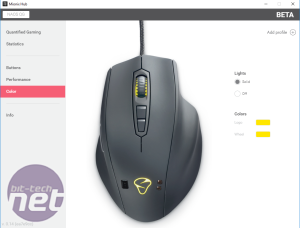
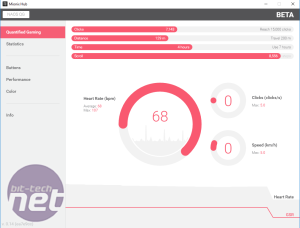
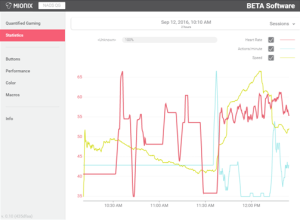
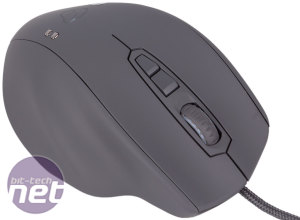
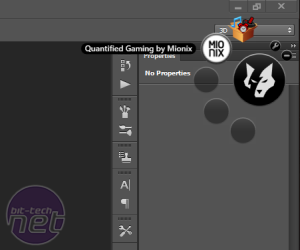
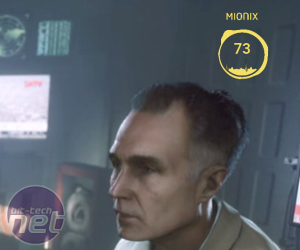
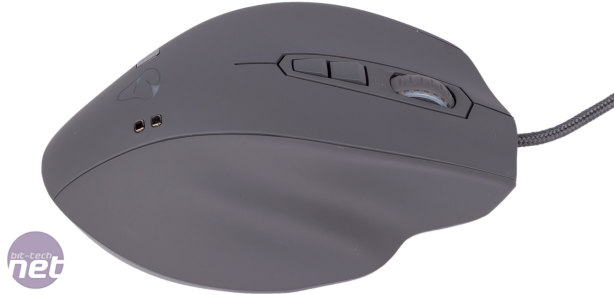







Want to comment? Please log in.